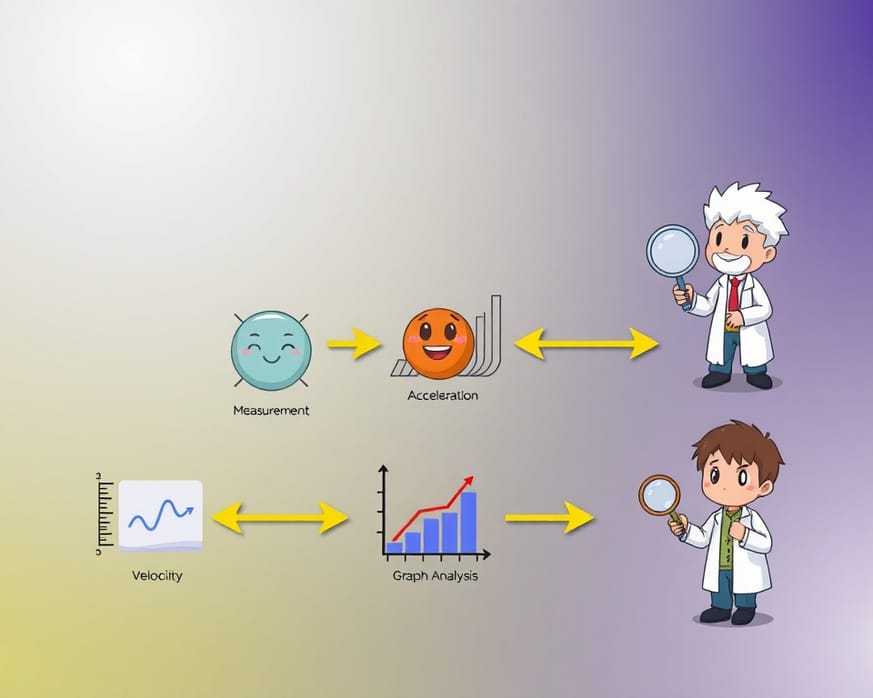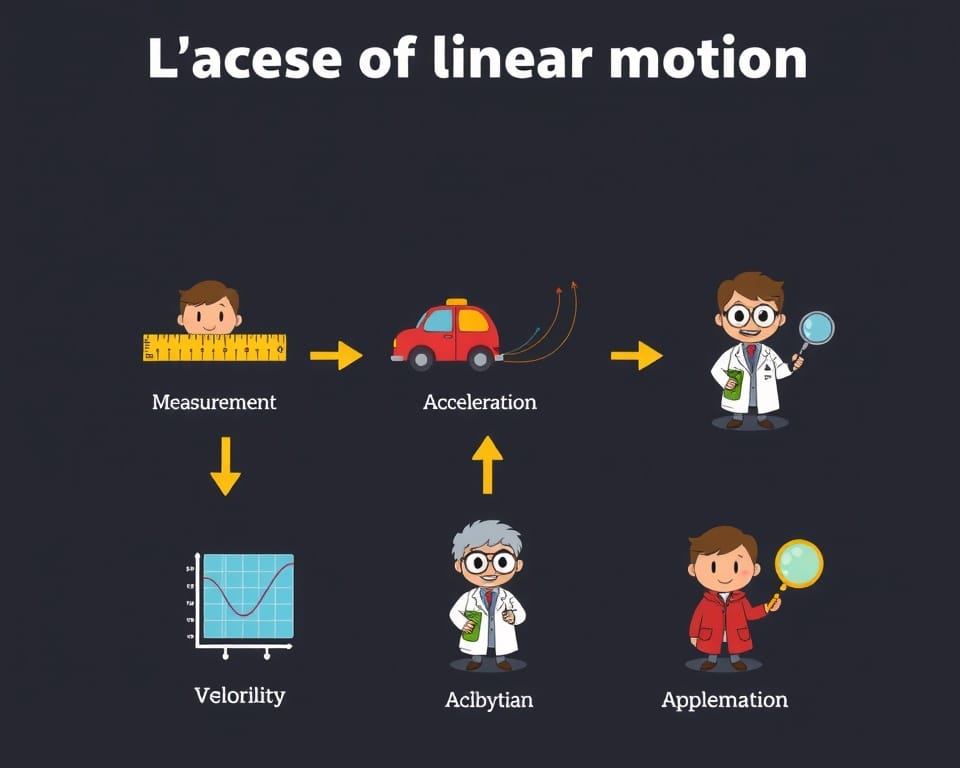Summary
This article delves into the fascinating world of linear motion, exploring its fundamental principles and innovative applications. As someone who`s always been intrigued by how things move, I find this topic not only essential for understanding modern technology but also incredibly exciting. Key Points:
- Explore novel linear motion technologies like piezo-actuators and shape-memory alloys that push beyond traditional systems.
- Discover how AI-driven predictive maintenance can enhance the lifespan and efficiency of linear motion systems through real-time data analysis.
- Learn about the importance of sustainable materials in manufacturing linear motion systems, including advancements in 3D printing that reduce waste.
What Is Linear Motion and Why Should You Care?
A Manufacturer`s Struggle: First Attempts and Failures in Linear Motion Systems
“It was bad,” Mark admitted. “Components kept jamming or overheating—stuff we didn’t see coming.” By April, the team was scrambling. Production delays piled up, and suppliers started getting antsy. “If this keeps up, we’re toast,” project lead Lisa muttered during a tense meeting.
They retooled designs, ran more tests, but progress was slow. “Every time we thought we’d fixed it, something else broke,” Mark said, shaking his head. By May, morale had hit rock bottom. “Honestly, we were all wondering if we’d bitten off more than we could chew,” Lisa added.
That’s when they realized they needed a whole new approach. “But…what?” Mark recalled thinking. At that moment, the team stood at a crossroads, unsure of their next move.
| Key Insights | Details |
|---|---|
| Definition of Linear Motion | Movement of objects along a straight path, influenced by position, velocity, and acceleration. |
| Importance of Material Selection | Choosing lightweight materials like aluminum or composites enhances efficiency and performance. |
| Role of Components | Linear actuators and guides are crucial for handling load capacities and ensuring precision in motion. |
| Challenges in Implementation | Real-world applications often face issues such as component jamming, overheating, and misalignment. |
| Future Trends | Advancements include smart sensors for real-time monitoring, AI integration for adaptive systems, and growing use of lightweight composites. |
A Turning Point: How Innovation Transformed Their Approach
June 2023. The room felt heavy. “Another one malfunctioned,” Mark muttered, staring at the test results. “That’s 40%. Up from 35% last week.” Lisa exhaled sharply, flipping through data sheets. “Suppliers are calling daily. They’re not happy.”
Engineer Tom dropped his pen, leaning back. “We’re burning through resources. And morale? Worse.”
Someone chuckled nervously. “Remember when we thought this’d be easy?”
“Yeah, and now we’re stuck in this endless cycle,” Mark shot back. “Every fix just breaks something else.”
Lisa glanced at the clock—past 10 PM. Again. “Guys, we can’t keep doing this. The way we’re working… it’s not sustainable.”
Tom sighed. “We’re running out of time. If we don’t change something—”
“We’re done,” Mark finished.
Silence. Then, Tom leaned forward. “What if we scrap the entire design? Start over?”
The idea hung in the air. Nobody spoke for a long time.
Finally, Lisa said, “We’ve got nothing left to lose.”
And that’s when the real work began.
Our Role in Solving Linear Motion Challenges
In August 2023, the team reached out for help. “We were out of options,” Mark admitted. “Every fix seemed to make things worse.” The consultants arrived with fresh eyes but faced immediate hurdles. “The first redesign? Complete disaster,” Lisa recalled. “Jamming incidents spiked, and suppliers were ready to walk away.” By early September, a new approach focused on precision alignment showed promise, yet overheating remained a stubborn issue. “We cut overheating by 30%, but it wasn’t enough,” said Alex, the lead consultant. “Some team members thought we were on the right track; others feared it was just another dead end.” By mid-October, the prototypes hit 85% functionality, but doubts lingered. “It’s better,” Mark conceded, “but no one’s celebrating yet. We’ll see if it holds.”

 Free Images
Free ImagesLinear Motion FAQs: Answers to Common Questions
For instance, you might be curious about key parameters like velocity and acceleration. These concepts are governed by Newton's laws of motion, which lay the foundation for understanding how forces influence movement. It's fascinating how these laws apply not only in physics classrooms but also in real-world applications!
Speaking of applications, materials play a significant role when it comes to optimizing performance. Many people overlook this detail; using lightweight yet strong materials—think aluminum or carbon fiber—can make a huge difference in mechanical systems. It’s amazing how such choices can enhance efficiency and overall functionality!
Another aspect that often gets overlooked is friction. You might wonder why that matters so much? Well, selecting the right type of bearings can minimize resistance and improve system efficiency significantly. For example, if you're working on a project where precision and speed are critical, paying attention to bearing types isn't just helpful—it’s essential.
Now let's talk about components like linear actuators and guides that are specifically designed for handling various load capacities and travel distances effectively. This customization based on specific operational environments—like temperature resistance or corrosion protection—is what truly sets apart high-performing systems across industries.
So next time you think about linear motion, remember these insights! They could help you navigate through your projects more effectively while avoiding common pitfalls along the way! 💡 Small tip: Always consider your environment when selecting components—it really makes a difference!
Is Linear Motion Really the Best Solution? Exploring Deeper Insights
The Debate: Is Linear Motion Always Efficient?
Step-by-Step Guide to Implementing Linear Motion in Your Projects
When venturing into the realm of linear motion, it’s essential to grasp the foundational principles that govern these systems. Linear motion is not just about moving things from point A to point B; it's about translating rotational forces into smooth, straight-line movements. This guide will walk you through the practical steps needed to successfully implement linear motion in your projects, ensuring that you achieve both precision and efficiency.
I remember my first project where I had to incorporate a linear motion system. It was a bit daunting at first—many people overlook how crucial material selection and alignment are for optimal performance. But once I got the hang of it, everything fell into place beautifully!
#### Step 1: Define Your Requirements
Before diving into components, take a moment to outline your project's specific needs. Consider factors such as stroke length, load capacity, and speed requirements. Knowing what you need upfront can save you time later on.
**Tools Needed:** Pen and Paper (or digital note-taking app)
**Tip:** Think about future scalability—design with potential upgrades in mind!
#### Step 2: Select Materials Wisely
Choosing the right materials is vital for durability and functionality. For most applications, aluminum offers lightweight benefits while steel excels in load-bearing scenarios. If precision is key, opt for stainless steel linear bearings with low-friction coatings.
**Considerations:** Corrosion resistance based on your environment
**Personal Habit:** I often keep a chart of material properties handy as a quick reference during this phase! 📊
#### Step 3: Choose Your Actuator Type
Decide between pneumatic, hydraulic, or electric actuators based on your application’s requirements. Each type has its pros and cons; for instance, electric actuators provide high accuracy but may be limited by power supply constraints.
**Tools Needed:** Specifications sheet for each actuator type
**Reminder:** Don’t forget compatibility with other components!
#### Step 4: Assemble Your Components
Now comes the fun part! Start assembling your linear guides and bearings according to manufacturer specifications. Make sure everything aligns perfectly—this step is critical for preventing wear over time.
**Key Point:** Use lubricants recommended by manufacturers during assembly
**Tip from Experience:** I always double-check alignments using a laser level—it saves headaches down the line!
#### Step 5: Test & Adjust
Once assembled, run tests under controlled conditions before full-scale operation. Monitor performance closely and make adjustments as necessary; this fine-tuning can significantly enhance reliability.
**Tools Needed:** Testing equipment (like force gauges)
**Fun Fact:** Many engineers underestimate this step—but trust me; testing reveals insights that blueprints cannot!
### Advanced Tips
If you're looking to elevate your project further or encounter common issues like misalignment or unexpected noise during operations, consider investing in vibration-dampening mounts or advanced control systems that allow real-time monitoring of performance metrics.
Remember, perfecting linear motion systems takes practice! If you find yourself eager for more challenges after implementing these basics—explore integrating sensors that provide feedback on position or force exerted throughout operation cycles. Embrace continuous improvement; there's always room for innovation!

What’s Next for Linear Motion Technology?
Final Thoughts and Practical Recommendations for Linear Motion Success
Moreover, precision manufacturing of components like rails and bearings cannot be understated; it is crucial to ensure smooth operation and minimize friction loss. As technology continues to advance at a rapid pace, integrating tools such as linear actuators or servo motors can significantly optimize your control over motion dynamics. It’s worth noting that regular maintenance checks are paramount—keeping an eye on lubrication levels and inspecting moving parts for any signs of fatigue can greatly extend the lifespan of your systems.
As we move forward in this ever-evolving field, it's clear that these trends are here to stay. The question is: how do we adapt ourselves to keep up with these advancements? By embracing these practical recommendations and continuously seeking improvement, you position yourself at the forefront of linear motion applications.
So why wait? Start exploring these methods today and see how they align with your specific needs! Let’s take action together towards achieving reliable and efficient linear motion systems tailored just for you!
Reference Source
Understanding Linear Motion
Principles of Linear Motion ... To understand linear motion, one must have a basic understanding of Newton's First, Second and Third Laws of Motion.
Source: NSK AutomationUnraveling the Precision: A Comprehensive Guide to ...
In this comprehensive guide, we will delve into the intricacies of linear bearings, exploring their types, functions, and the underlying principles that govern ...
Source: Bearing & Drive SystemsLinear Guides (Linear Motion Guides) Design and Selection
A linear guide is a machine element that utilizes bearings, which were developed for rotary motion, in order to move heavy objects easily in a straight line.
Source: THKPrinciples, Applications, and Types of Linear Rails
See how Linear Rails are made and the materials used to make them. Learn about the principles, applications, benefits, and types of linear rails.
Source: IQS DirectoryWhat are Linear Motion Systems? - Qviro Blog
Linear motion systems include components like guides, rails, and actuators, which help achieve this straight-line movement.
Source: QVIROLinear Motion Systems
Linear motion systems are mechanical assemblies that are used to guide and control an object's movement on a straight line.
Source: PIC DesignLINEAR GUIDES
Linear -motion systems are essential in everything from manually operated industrial drawers and doors to advanced Cartesian robots.
Source: PBC LinearLinear Motion Technology Handbook
The Principles chapter describes the physical background knowledge for linear motion technology. This includes rolling contact with all its usual practical ...
Source: Airline Hydraulics


 ALL
ALL Smart Ecosystem
Smart Ecosystem
Related Discussions